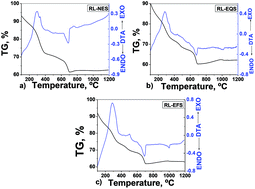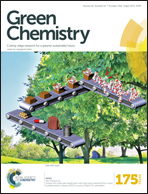Recycling of chromium wastes from the tanning industry to produce ceramic nanopigments
Abstract
Growth in the use of colored ceramics and the demand for better quality have stimulated research into the development of new classes of pigments with superior durability and color reproducibility, which can be produced using inexpensive, straightforward, and eco-friendly synthesis procedures. The present work proposes a modified sol–gel route for the production of green and pink Cr–Al2O3 nanoparticles, employing solid and liquid tannery wastes together with NOM-rich water. The synthesis involved preparing a solution of Al2Cl3 and the wastes in NOM-rich water. The solution was kept under stirring to form a gel that was then heated to 100 °C in order to eliminate water. This material was subsequently homogenized and calcined. The results indicated that single phase chromium-doped α-alumina could be obtained using an initial solution pH of 4.0 and calcination at 1100 °C for 4 h. Colorimetric analysis of the pigments was performed according to the CIE 1976 L*a*b* norm. The results revealed a strong dependence of pigment color on the dopant concentration and pH used in the synthesis. The presence of the Cr3+ oxidation state in all the samples studied was confirmed using X-ray absorption near-edge structure (XANES) spectroscopy. The particle size of the samples was 39 ± 1 nm, as determined by FEG-SEM measurements. The catalytic tests demonstrated the potential of tannery wastes for use in the catalytic reduction of nitrophenol, with conversion rates between 49 and 98%. It could be concluded that the proposed route was effective for the production of α-alumina pigments and catalysts using tannery wastes, offering important technological and environmental advantages.


 Please wait while we load your content...
Please wait while we load your content...